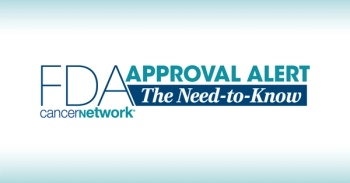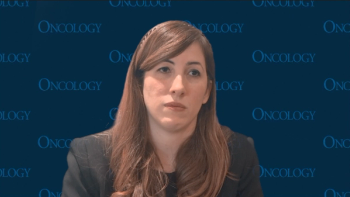
Closing the Gap Between Academic and Community Practices in Multiple Myeloma
The National ICE-T Conference may inspire future collaboration between community and academic oncologists in the management of different cancers.
Developing a bridge between academic and community oncologists will be critical as the use of chimeric antigen receptor (CAR) T-cell agents, bispecific antibodies, and other cellular therapies continues to expand in multiple myeloma, lymphoma, and solid cancers, according to Al-Ola A. Abdallah, MD.
Abdallah spoke with CancerNetwork® at the 2025 National Immune Cell Effector Therapy Conference about the meeting’s role in facilitating collaboration across institutions in the management of different hematologic malignancies and solid tumors, especially in care centered on the use of novel immunotherapies. According to Abdallah, future collaboration is necessary to address issues related to treatment access, adverse effect management, and other obstacles that community practices may encounter.
Abdallah is an associate professor of medicine and the director of the Plasma Cell Disorder Clinic in the Division of Hematologic Malignancies and Cellular Therapeutics at the University of Kansas Medical Center.
Transcript:
The whole purpose of [the meeting] is to close that gap. Our goal here is to develop that bridge, our network between academic and community oncologists, and that’s the biggest goal that we want to try to develop. We’re not planning just for education; we’re planning for engagement and trying to develop [an] actual workshop between our academic centers and the community oncologists in order to address their concerns about providing bispecifics and CAR T-cell [therapy] at other institutions. That’s our biggest goal. This is not like we’re going to give some presentations and leave. This is going to be, hopefully, a future collaboration between us and the community oncologists.
Majorly, we hope to have more collaboration about the potential role of the cellular therapy, that it’s extensive not only in multiple myeloma, lymphoma, [but] also in solid cancers. This means there has to be a future development of access to treatment, how to manage the [adverse] effects and overcome all the obstacles. This is going to be important to understand. It’s tough to provide CAR T-cell and cellular therapy right away, but it’s something that we have to think about in the future, especially [because] we have many cancers other than multiple myeloma and lymphoma. We’re going to start using more cellular therapies in the future.
Newsletter
Stay up to date on recent advances in the multidisciplinary approach to cancer.














































































